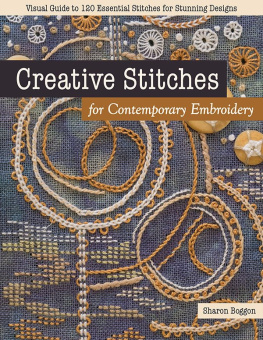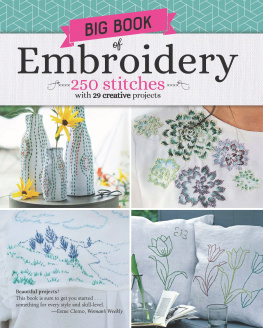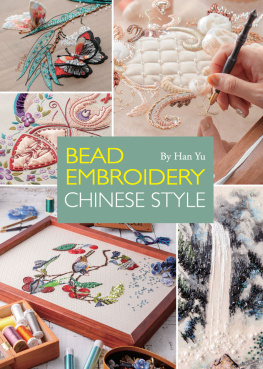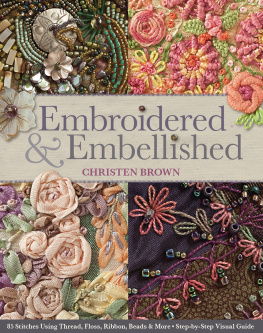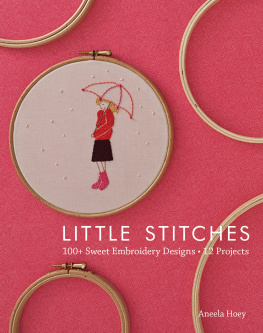Running Stitch
*For double running stitch, sew another line of running stitch between the first line of running stitches.

Stem Stitch
Make a thicker line by overlapping the stitches further.

Coral Stitch
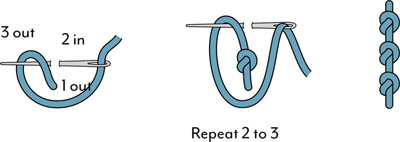
Straight Stitch
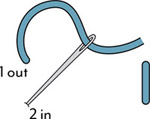
Lazy Daisy Stitch

Chain Stitch

Satin Stitch
Start from the widest part of the shape to fill one half, then go back and fill the second half.
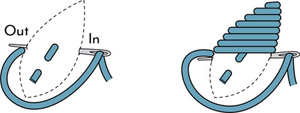
Satin Stitch with Padding
Work a layer of straight or chain stitches underneath the satin stitches to add thickness and height.

Open Chain Stitch
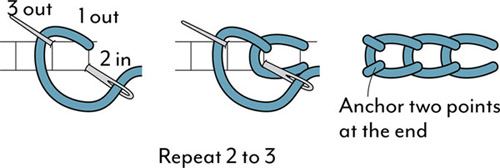
Buttonhole Stitch
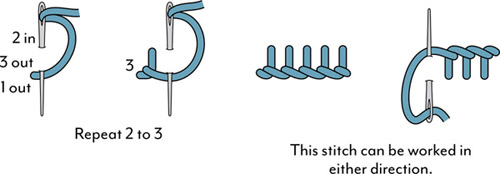
French Knot Stitch
The knot size changes depending on the number of wraps. 200
Lanham, MD 20706
www.stackpolebooks.com Distributed by NATIONAL BOOK NETWORK SHIROI ITO NO SHISHU (NV70398)
Copyright 2017 by Ayako Otsuka/NIHON VOGUE-SHA.
All rights reserved. 200
Lanham, MD 20706
www.stackpolebooks.com Distributed by NATIONAL BOOK NETWORK SHIROI ITO NO SHISHU (NV70398)
Copyright 2017 by Ayako Otsuka/NIHON VOGUE-SHA.
All rights reserved.
Original Japanese edition published by Nihon Vogue Co.
English language licensed by World Book Media, LLC.
Email: Photography by Kato Shinsaku and Shirai Yukari All rights reserved. No part of this book may be reproduced in any form or by any electronic or mechanical means, including information storage and retrieval systems, without written permission from the publisher, except by a reviewer who may quote passages in a review. The contents of this book are for personal use only. Patterns herein may be reproduced in limited quantities for such use. Any large-scale commercial reproduction is prohibited without the written consent of the publisher. We have made every effort to ensure the accuracy and completeness of these instructions.
We cannot, however, be responsible for human error, typographical mistakes, or variations in individual work. British Library Cataloguing in Publication Information available Library of Congress Cataloging-in-Publication Data available ISBN 978-0-8117-3822-4 (paperback)
ISBN 978-0-8117-6823-8 (e-book) Translator: Kyoko Matthews
English Editor: Lindsay Fair
Technical Editor: Yvette Stanton
Page design and layout: Arati Devasher, aratidevasher.com First Edition Printed in China 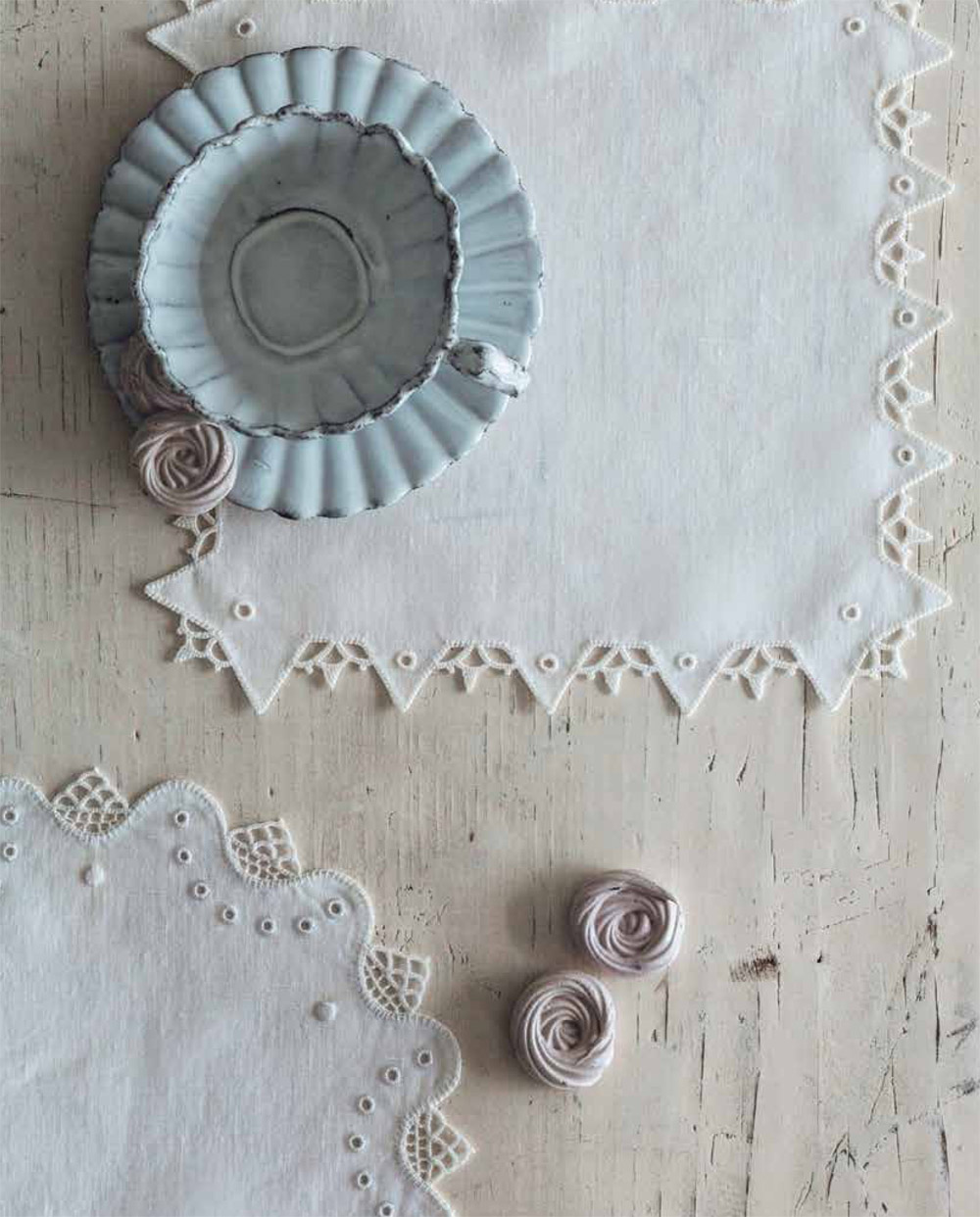
Contents
Guide
Embroidery is common among nearly every civilization in history, with each culture possessing its own unique styles and methods. Long before the development of advanced dyeing and weaving technology, embroidery provided a way to embellish textiles designated for special occasions. During medieval times, embroidered textiles were reserved for royalty and the church. In contrast to the heavily embroidered designs featuring richly colored silk and even metallic threads, there also developed a more delicate style of embroidery worked exclusively in white. Known as opus teutonicum , white linen thread was used to embroider white linen cloth to create altar coverings in 12th century Europe, particularly in the areas that would eventually become Germany.
This is considered to be one of the earliest forms of whitework. By the 16th and 17th centuries, whitework embroidery was no longer reserved for church vestments, but could also be seen on womens clothing and household linens. New techniques emerged, including open work, cut work, and needlelace. As the worlds leading producer of linen, Europe became known for whitework embroidery. Over time, different regions developed their own styles, such as Hedebo in Denmark and Schwalm in Germany. In fact, there are so many different whitework styles and techniques that its impossible to include them all in this book.
Instead, Ive included five different whitework techniques. Lets start by learning a bit more about each of these techniques.
Schwalm Embroidery
Schwalm embroidery originated in Germany and incorporates many different whitework techniques. Schwalm embroidery designs were inspired by the Tree of Life and feature flowers, leaves, hearts, and birds. Schwalm embroidery closely resembles the Hvidsm style of Hedebo.
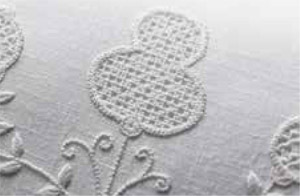
Hedebo Embroidery
Hedebo is a style of whitework that originated in the farming communities of the Hedebo, or heathland, region of Denmark.

Hedebo Embroidery
Hedebo is a style of whitework that originated in the farming communities of the Hedebo, or heathland, region of Denmark.
As Hedebo embroidery maintained popularity for a span of nearly 200 years, several different styles developed. One of the most common styles is Hedebo needlelace, where shapes are constructed, then filled with patterns of pyramids, bars, and rings made using the buttonhole stitch. The patterned shapes can be cut and stitched directly into a piece of fabric or can be attached as an edge. Another style of Hedebo embroidery used in this book is Hvidsm, which features drawn thread work motifs surrounded by rows of chain stitch. 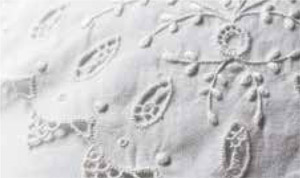
Drawn Thread Work
Drawn thread work is an open work embroidery technique in which threads are cut and removed from a piece of fabric, then the remaining threads are grouped together to create patterns.
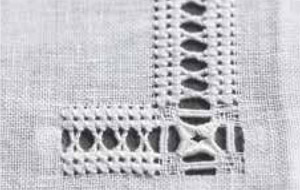
Counted Thread Work
Counted thread embroidery is a general term for any embroidery in which the fabric threads are counted as you stitch, such as cross-stitch or needlepoint.



